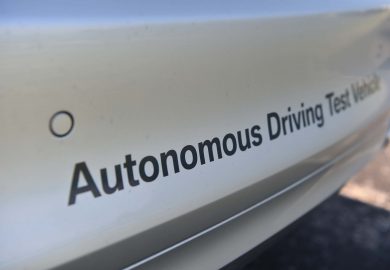The Robert Bosch Group, usually referred to as Bosch, is a German company specializing in engineering and electronics. The firm produces brakes, steering columns, electrical controls, and a variety of other consumer goods. The company was founded in 1886 and is now a multinational corporation.
Bosch’s Experience in Navigation, Information, and Computers
Since 2011, Bosch has developed multiple systems that are in use commercially for trucks, semis, two-wheeled vehicles, and rail systems. The company conducts its research on mobile applications in Palo Alto, California, and Abstatt, Germany. Each year, its sales of driver assistance technology have increased by an average of 33 percent.
What Bosch Already Provides for Driver Assistance
Bosch has a heads-up on the competition when it comes to the technology that is needed for safe autonomous cars. The company is the world’s largest automotive supplier and manufacturer of the radar sensors and cameras that self-driving cars need to have in order to navigate the roads and interstates. Bosch has publicly stated its partnership with Tesla for its Autopilot program. The Autopilot program is a self-driving interface that is already in use in Australia.
Global Navigation Satellite Systems
Bosch intends to use Global Navigation Satellite System (GNSS) technology in its self-driving car technology. The GNSS gets real-time information from 32 or more satellites, and the accuracy has a margin of error of one centimeter. The information includes traffic, weather, construction, and other key details that the software would need for navigation. Bosch also already makes the lidar and sensor systems in use by Tesla and other manufacturers. As of 2016, the GNSS technology was still too costly to integrate into autonomous cars for mass production of affordable vehicles.
Navigation in the Urban Environment
The biggest challenge of GNSS that Bosch has been working on is the urban canyon effect. Just like a person often has a difficult time getting a cellphone signal in a metropolitan area, the cars with GNSS have had the same problem in the pilot and test phases of technological exploration. A system of cameras is one option that Bosch is considering in order to overcome the urban canyon effect. Bosch is actively working on this urban canyon problem with its GNSS technology.
Navigation in Difficult Road Conditions
Bosch’s technology is also working on weather conditions that make roads difficult to navigate. The sensors and cameras do not yet have a way to figure out how to deal with snow-covered roads in which the lane markers are covered. Bosch will need to test its software in a variety of geographic locations so that it can learn and experience different road conditions.
Developing an Alliance with Mercedes-Benz
Bosch has also partnered with Mercedes-Ben. In this partnership, Bosch plans to deliver technology that will make it easier for people to hail an autonomous car as if it were a taxi. The idea behind the partnership is a sort of robo-taxi enterprise in which a person could call for the vehicle with an app on his or her smartphone. The car would either drive itself to the person in need of a ride, or it could be exchanged at a designated drop-off point as a sort of ride-sharing program.
Developing the Technology
Bosch will be responsible for developing most of the technology behind the self-driving cars while Mercedes-Benz will continue with the automobile manufacturing side of the equation. Bosch has already partnered with Uber for making apps for ride-sharing, and it will build on that technology for connecting people in need of a ride with vehicles that are near their location. The system will be a network of urban automated taxis.
How the Robo-Taxis Will Work
The vehicles would have no steering wheel and would be entirely self-driving cars. They would be programmed with SAE Level 4 or SAE Level 5 autonomy. An SAE Level 4 vehicle features advanced automated features that make manual controls redundant while SAE Level 5 eliminates the need for a human to drive the car altogether. The user interface would allow the rider to input the destination, and the vehicle would use GPS and real-time traffic information to select the most efficient route.
Bosch and Mercedes-Benz have more than 500 engineers combined working on these radical designs with a goal of having the vehicles on the roads in the USA by 2021. These autonomous cars could be a boon for businesses because there will be no need to pay a driver. The cars will keep on moving to pick up new riders, reducing downtime.























